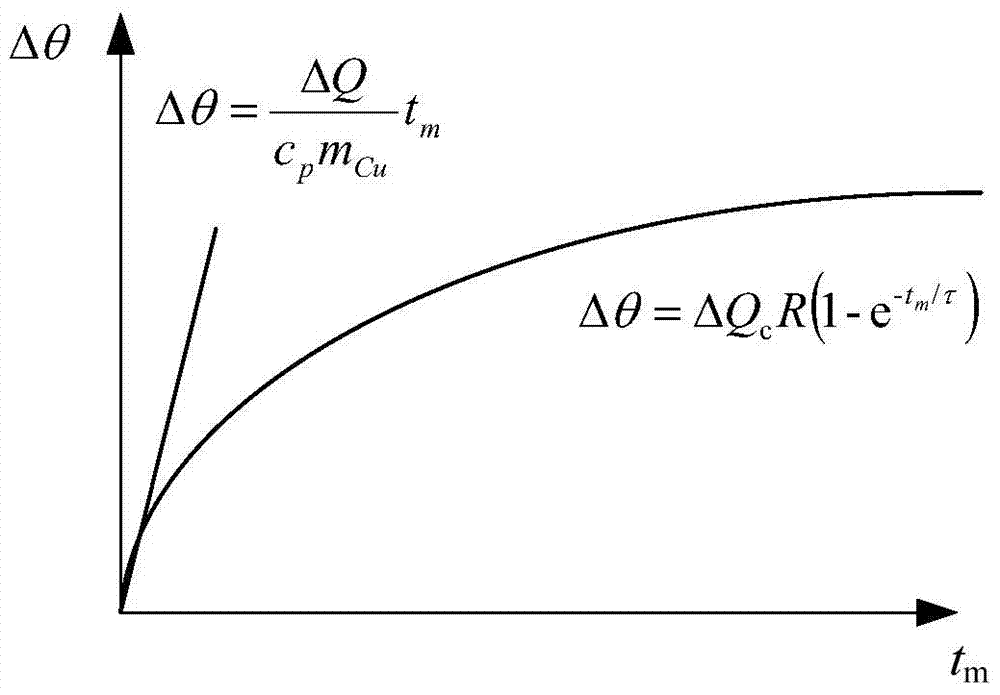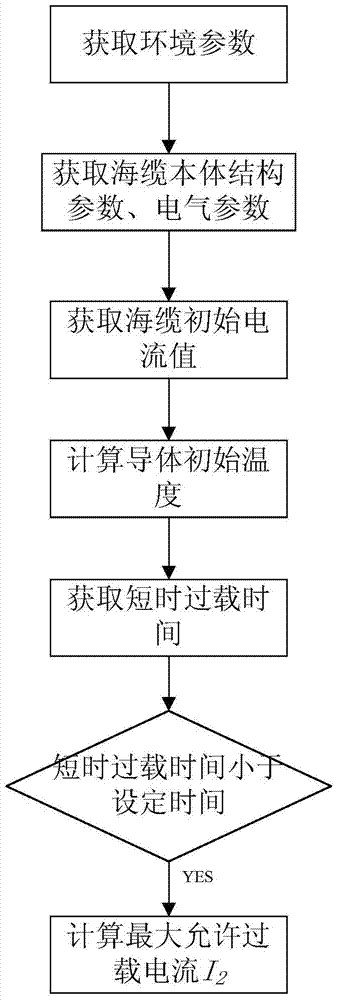A Simple Algorithm for Short-Time Maximum Permissible Overload Current of Submarine Power Cable
A submarine power cable, the maximum allowable technology, applied in the field of overload current calculation, can solve the problems of complex calculation process, cumbersome formulas, and many parameters, and achieve the effect of simple calculation process, high reliability, and few parameters required for calculation
- Summary
- Abstract
- Description
- Claims
- Application Information
AI Technical Summary
Problems solved by technology
Method used
Image
Examples
Embodiment Construction
[0020] The technical solution of the present invention will be further described in detail below in conjunction with the accompanying drawings.
[0021] Such as figure 2 Shown, the steps of the present invention are:
[0022] 1) Obtain environmental parameters, including ambient temperature θ 0 , Soil thermal resistivity T of submarine cable landing section 4 ;
[0023] 2) Obtain the structural parameters and electrical parameters of the submarine cable body. The structural parameters of the submarine cable body include the thermal resistance coefficient T of the cable insulation layer, inner lining layer, and outer layer 1 , T 2 , T 3 , the electrical parameters include wire loss per meter of cable per phase core W c , The dielectric loss W of each phase core of the cable per meter i , cable metal sheath loss coefficient λ 1 and armor loss factor λ 2 ;
[0024] 3) Obtain the initial current value I of the submarine cable through online monitoring 1 ;
[0025] 4) ...
PUM
 Login to View More
Login to View More Abstract
Description
Claims
Application Information
 Login to View More
Login to View More - R&D
- Intellectual Property
- Life Sciences
- Materials
- Tech Scout
- Unparalleled Data Quality
- Higher Quality Content
- 60% Fewer Hallucinations
Browse by: Latest US Patents, China's latest patents, Technical Efficacy Thesaurus, Application Domain, Technology Topic, Popular Technical Reports.
© 2025 PatSnap. All rights reserved.Legal|Privacy policy|Modern Slavery Act Transparency Statement|Sitemap|About US| Contact US: help@patsnap.com



